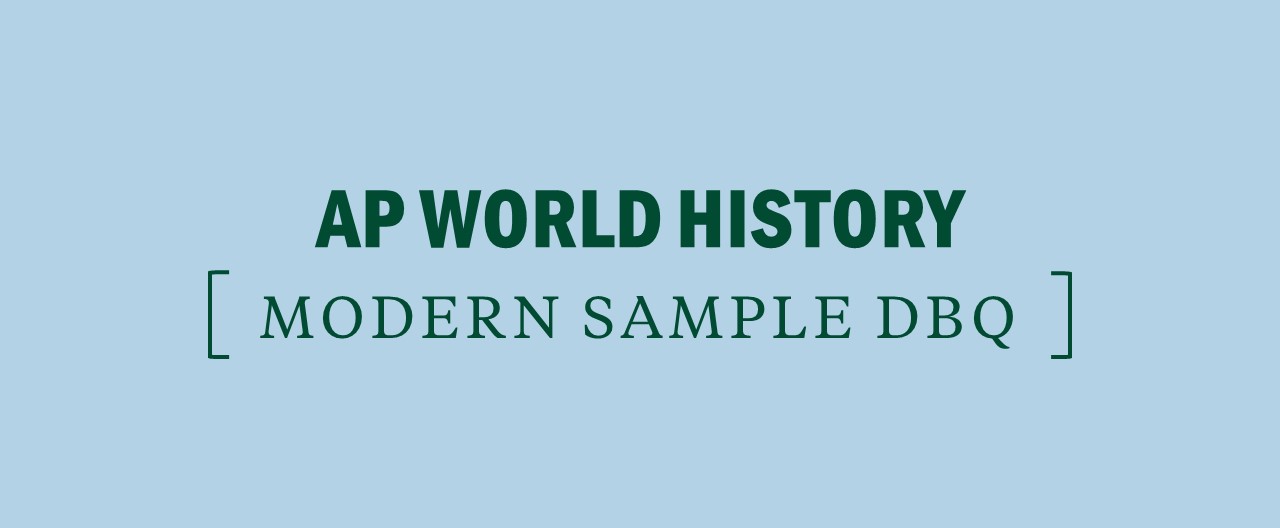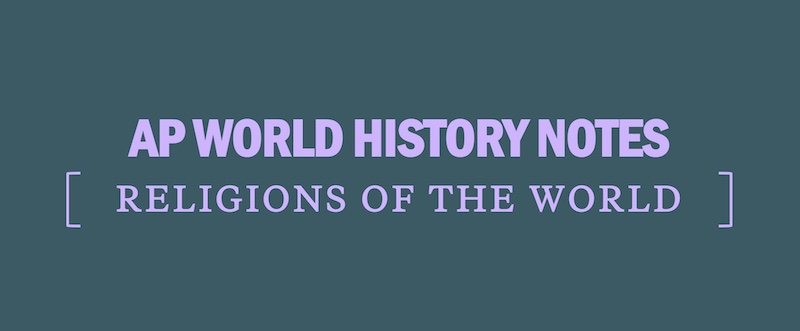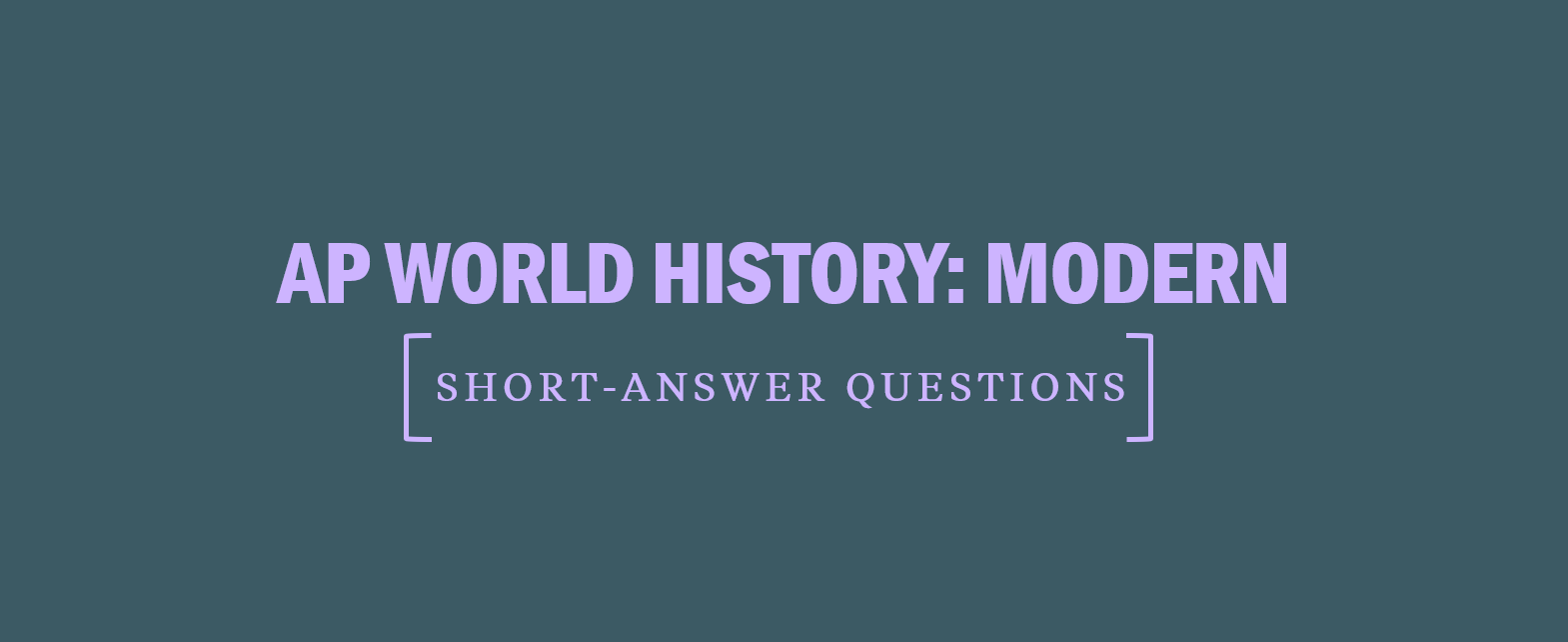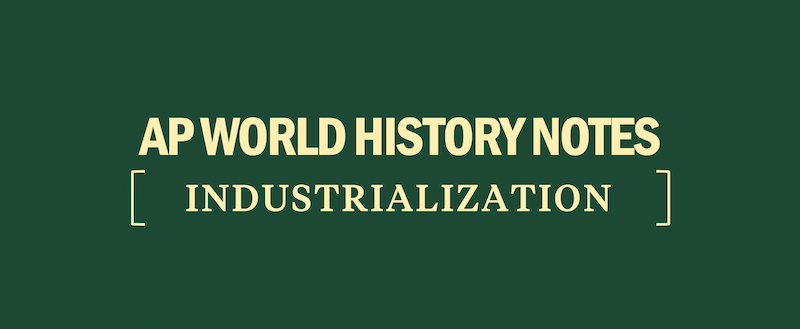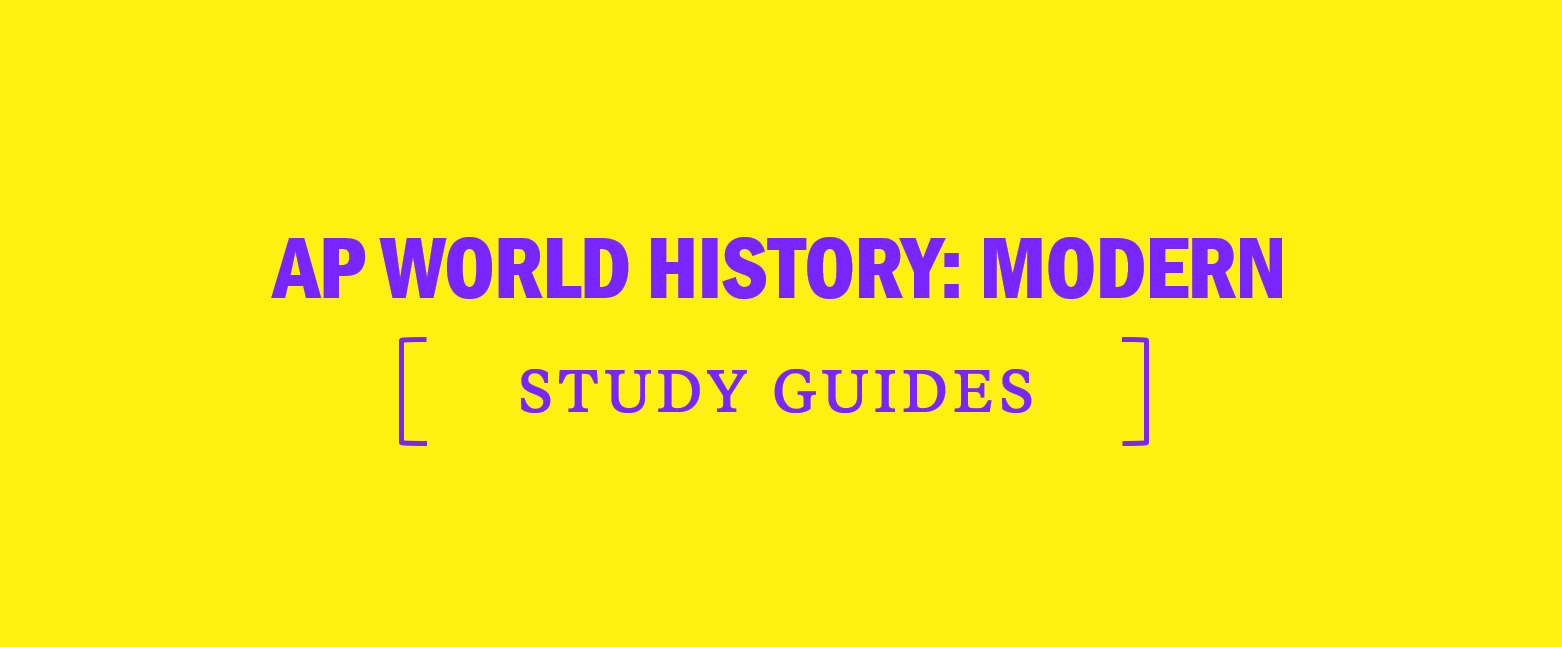AP World History: Modern Sample DBQ
The AP World History: Modern Exam requires you to complete a document-based question, which is why we have provided example DBQ’s and tips for writing reponses below.
Sample AP World History Document-Based Questions
Click each document below to view the sample.
Step 1: Analyze the Prompt
First, read the prompt itself. You’ll need to develop an argument using the skill of causation: how did empire-building processes affect political structures in the years from 1500 to 1900? The prompt uses the verb evaluate, so you will need to make a claim about the effects on political structures.
Spend the 15-minute reading period analyzing the documents themselves, thinking for each document about its authorship/historical situation, main idea, and why it was written.
Begin grouping the documents into categories that you can use to help organize your essay. A sample high-scoring writer’s notes on the documents appear below:
- King of Kongo asks king of Portugal for help because Portuguese trade is upset- ting the vassal system
- Cortes uses weapons and allies to kill Mexica
- Puerto Rico population trends: native population ↓, European ↑, mixed ↑
- French letter describes Mughal use of rajah system in India
- British governor in India’s letter to East India Company says British policies better for economy
- Churchill describes effectiveness of guns in Sudan
- Japanese cartoon describes Russian expansion as “black octopus” during time of Russo-Japanese War over territory
Groups of empire-building processes:
- Military: 2, 6, 7
- Colonization: 3
- Economic: 1, 4, 5
Step 2: Plan Your Response
Next, take time to plan your response. Focus on formulating a strong thesis, and check your plan against the six DBQ requirements. See the sample plan that a high-scoring writer might make. Scoring requirements are written in bold for reference; note that the writer includes six of the seven documents and plans to meet the requirement for describing at least three documents’ sourcing by noting the viewpoints of two documents and the purpose of one document.
Since the prompt asks for how empire-building affected political structures, the writer will organize the essay by explaining multiple causes (processes) that impacted political structures.
¶ intro
- Context: Native American governments (villages and empires)
- Thesis: causes of empire building: military, colonization, & economics
- military and colonization destroyed political structures in Americas where disease played a role
- combination of processes allowed infiltration of political structures in Asia and Africa
- (complex understanding: multiple causes)
Cause ¶1: military conquest → destruction
- Evidence: Doc. 2: defeat of Mexica
- Spanish advantages: horses, guns, local support
- Sourcing 1: viewpoint: Cortes justifies actions by attributing victory to God
- Additional evidence: Pizarro defeat of Inca; Spanish set up viceroys and social hierarchy
- Evidence: Doc. 6: British defeat of Sudanese
- Sourcing 2: viewpoint: perhaps exaggerated, but shows British expect weapons will win
Cause ¶2: colonization → replace native populations’ governments
- Evidence: Doc. 3: PR population
- Stats of native peoples, Europeans
- Additional factor of disease
Cause ¶3: military + colonization + economic influence → gradual political power
- Evidence: Doc. 4: French letter about India
- Describes political system of rajahs, hints at instability
- British merchants would gain power
- Evidence: Doc. 5: British E. India Company gov.
- Br. didn’t have “fixed plan,” but “destroyed” native populations’ economic policies
- Br. gov. made India a colony
- Evidence: Doc. 1: King Afonso I letter
- Port. merchants undermining king’s power
- Sourcing 3: purpose: submission may not be genuine
¶ conclusion: 3 processes; when additional factors (disease in Americas) briskly replaced political structures; India more complex interplay of processes
Step 3: Action! Write Your Response
Use your plan to write out your response—if you’ve taken the time to plan effectively, everything you write should support your thesis.
Step 4: Proofread
Leave a minute at the end to complete a brisk proofread and double-check that you met each of the DBQ requirements.
[RELATED: AP World History: Modern Sample Long Essay Question ]
Sample High-Scoring Response
Before the arrival of Europeans, Native American societies had established diverse political structures. The villages in the northeast of North America practiced a mixture of agriculture and hunter-gathering and sometimes formed alliances among tribes. The large-scale empires of the Mexica and Inca in Central and South America had centralized power in city-states and exacted tribute or labor from subjugated tribes. However, these societies would experience political upheavals when Europeans began their quest for territory in the 1500s. Empire- building typically involved a combination of the processes of military conquest, colonization, and economic influence. Where epidemic disease was also a factor, military and colonization strategies sometimes resulted in the total destruction of previous political structures in the Americas; a combination of the three processes permitted empire-builders to gradually infiltrate, then supersede, the political structures in Asia and Africa.
The extremes of military conquest sometimes resulted in the destruction of the native populations’ political structures. Document 2 references the Mexica people’s violent devastation at the hands of the Spanish, with a hundred falling “at each discharge of guns.” While Cortes attributes his victory to God’s favor due to fight- ing for his faith and king, tangible factors gave him the practical advantage: horses (which were not native to the Americas), guns, the Mexica’s unfamiliarity with such weapons, and the support of local allies. Cortes, perhaps seeking to impress the king, likely exaggerates in the claim that the victory was “without ourselves sustaining any injury”; still, the claim indicates both the strength of the Spanish military technology and their attitude of superiority that they used to justify their takeover of the existing Mexica government. Also using military technology and the support of other tribes, the Spanish under Pizarro took control of the Inca empire in the Andes. In both locations, the Spanish essentially destroyed the empires and installed their own political systems, with viceroys who served under the Spanish crown and a hierarchical class system that gave preference to those of European ancestry. The effectiveness of military conquest for destroying political structures is also demonstrated in Document 6, an account of a battle in Sudan that demonstrates the awesome firepower of machine guns to leave the Sudanese fighters in “tangled heaps.” Although the document, written by the British Churchill, might provide a glorified account of the battle that exaggerates the British advantage, the fact that Churchill expected their weapon technology would automatically give victory is indicated in the disbelieving sentence: “ It appeared to our cavalry commander that the [Sudanese fighters] would actually succeed.”
Countries sending large numbers of settlers was another effective method of empire-building. This process enabled European nations to replace native governments in the Americas. For instance, Document 3 indicates that from 1530 to 1795, the proportion of Native Americans in the population of the colony of Puerto Rico dropped dramatically from 36.4 percent of the population to just 2.5 percent. At the same time, Europeans as a share of the population rose from 10 percent to 51.5 percent by 1860. The increase in the proportion of Europeans and blacks corresponds with the Spanish overrunning the native populations and instituting plantations. The spread of diseases among the native populations made it easier for the Spanish to do away with long-standing native governments and establish their own political structures in the Americas.
In India and Africa, Europeans utilized the old strategies of military force and colonization, but unlike in the Americas, newly introduced diseases did not have such a devastating effect on native populations. Thus, the process of empire-building also involved longer-term economic policies that caused a more gradual build-up of political power. European merchants gradually expanded their power in India, aided by the decline of the Mughal empire, as explained in Document 4. A French physician describes the emperor’s practice of “nourish[ing] jealousies” among the local rajahs, many of whom commanded armies larger than those of the emperor, to distract the rajahs from ever threatening his power. By describing this potential threat to the emperor, the document hints at the potential for outsiders to take advantage of the political instability, as indeed the British merchants extended their economic influence into political control. Indeed, in Document 5 a governor of the East India Company affirms that British control happened through “fortunate and unforeseen occurrences” rather than a “fixed plan.” He also confirms the power of economics in gaining political control, praising the economic policies of the British and celebrating the “destroyed” economic policies of the “natives.” Eventually, the British government would take over the East India Company’s holdings and rule India as a colony. Document 1 also affirms the potential of economics to provide inroads to political power: King Afonso I of Kongo in Africa appeals to the King of Portugal about the behavior of Portuguese merchants, who are undermining King Afonso’s power by enrich- ing his vassals, making them no longer “content and subjected under our control.” King Afonso’s highly submissive tone (“I kiss your hand many times”) may indicate not genuine submission to the King of Portugal, but rather an understanding of the threat that economic power has on his political power. His letter could be part of a calculated approach to get help restoring his political power by appealing to the Europeans’ attitude of superiority.
Overall, the empire-building processes of conquest, colonization, and economic influence allowed empire-builders to exert power over territories. When additional factors, such as epidemic disease, also played a role, as they did in the Americas, the empire-builders could sometimes briskly overthrow and replace the original political structures. In locations such as India, empire-building involved a more complex interplay of economics with the pre-existing political structures, though the Europeans were still able to eventually gain control.

